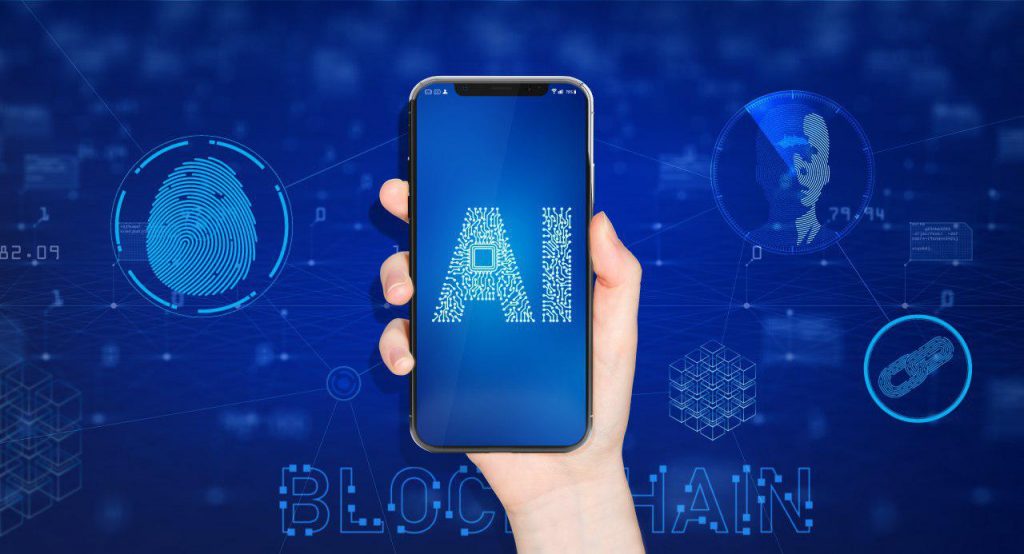Among all current disruptive technologies, both blockchain and artificial intelligence (AI) have become a focus of attention for biometrics. By combining these two, problems regarding identity management, privacy risks, and access control can be easily addressed.

Financial institutions, among other enterprises, are also moving toward biometric authentication methods. Biometric identifiers such as fingerprint and facial recognition to access tokenized payment information have been implemented. This evolution continues to progress within the fintech industry and is making its way to the cryptocurrency marketplace. ABBC Foundation’s Aladdin Wallet also integrates biometrics into its system — ensuring a faster, more secure, reliable, and user-friendly platform for crypto-transactions.
Combining blockchain and AI into biometrics could potentially have many advantages. With two powerful technologies working simultaneously for security and convenience, the way identity and access management will operate in the near future will be redefined.
How Does Biometrics Work?
The world was introduced to biometrics technology in 2013 when Apple released its Touch ID iPhone feature. Since then, biometrics has been prevalent in everyday affairs. In relation to that, the size of the global biometrics market is expected to grow by around 20% for the next five years.
Biometrics are receiving a lot of attention as the presumed successor to the traditional password system. It adds another layer to security by using a physical characteristic that’s unique to every user. The most commonly used are fingerprint, face, iris, and voice recognition. Each of these identifiers may be used in combination to ensure greater accuracy of identity verifications.
Facial recognition is expected to become even more prominent over the next few years because of the advantages it offers. According to a report by Mordor Intelligence, the facial recognition technology market is estimated to reach a value of $9 billion by 2024, up from $4.51 billion in 2018. The technology can achieve accuracy despite coverups, provide real-time matching against databases, and maintain security through distinctive facial features.
On the other hand, phone-based fingerprint recognition is the most common biometric authentication mechanism available today. Apple and Android’s biometric features — 34 percent of companies use Apple’s Touch ID fingerprint sensor, 14 percent of companies use Apple Face ID and 7 percent use Android Face Unlock.
“In the event of a breach, it creates a Herculean challenge because physical attributions such as fingerprints cannot be replaced,” says CEO and Co-Founder of ZL Technologies Kon Leong. Mr. Leong is just one of the many cybersecurity experts who testify that fingerprint recognition is a proven security measure that cannot be contravened with ease.
Additionally, the largest application markets for biometric technologies include finance, healthcare, government, and enterprise-level physical and IT security. These markets are typically involved with a huge number of people which translates to higher security risks, especially in terms of payment transactions, data authentication, and storage and collection of identification. Sooner than later, the biometrics sector has attracted new technologies that could further protect and enhance the accessibility of public and personal accounts.
Blockchain and AI-Powered Authentication
When dealing with topics like security, transparency, and most importantly, trust, one of the best technologies that could provide promising results is blockchain. In a similar fashion that artificial intelligence (AI) and machine learning have displayed untold potential in responding to cybersecurity threats. This leads to the notion that AI and biometrics create an authentication mechanism that is much better than the existing ones we have today. No doubt that in the upcoming years, more blockchain and AI-enabled biometrics solutions will be developed and integrated into various industries.
Different types of identity verification systems are used by different sectors. At present, governments have been issuing identity claims in the form of documents that are difficult to falsify – birth certificates, driver’s licenses, and passports. The solutions involve blockchain which achieves decentralization, executable contracts, secure encryption, and consensus. All of the mentioned advantages of the new technology hugely contribute to maintaining a safe society.
Another interesting application of biometrics to the blockchain is identifying smartphone owners through facial and fingerprint recognition. The same biometrics can be implemented to authorize data access for confidential data such as digital wallets. Alongside traditional passwords or PIN, biometrics can be integrated for multi-factor authentication.
This is where the adoption of AI comes in handy. It will help develop data-driven security protocols. Together, AI and biometrics can change the authentication game by promoting enhanced security by identifying identities and user processes in a more concise way. One good example is the effectivity of facial recognition with the help of machine learning. Through the large volumes of facial data available in the system, AI and biometrics can create more precise authentication models.
When AI and blockchain technologies are used together, it provides an additional defense against cyber attacks. With AI, real-time theft detection is made possible, while blockchains take care of vulnerabilities in decentralized databases.
Aladdin Wallet’s Top-Level Security
As investments in cryptocurrencies have grown in popularity, security violations have also increased over time, with millions of dollars in bitcoin and other digital currencies stolen from wallets around the world. In the fintech industry, there are numerous standards that are followed to maintain data security that will safeguard people’s assets. This caused digital wallet companies and ICO projects to consider moving forward in the direction of biometric authentication.
Aladdin Wallet integrates a multi-factor authentication method wherein upon registration of accounts, users should input the codes sent through mobile and email. Together with this, the wallet dashboard within the application can be encrypted with facial recognition or fingerprint sensor. These security measures are fraud prevention tactics that ensure top-level security to the users. With these precautionary efforts, seamless crypto-transactions are made possible within the Aladdin Wallet.
“I think fingerprinting and facial recognition will be the industry standard for identification.” – Matthew Prouse, Head of Industry at Xero
ABBC agrees with Mr. Prouse’s perception regarding biometrics, which is the reason why the team is also committed to safeguarding digital assets of all users through the Aladdin Wallet. With the power of biometrics — similarly blockchain and AI as well — identification will be guaranteed to be less hassle and less risky for both companies and individual users.


